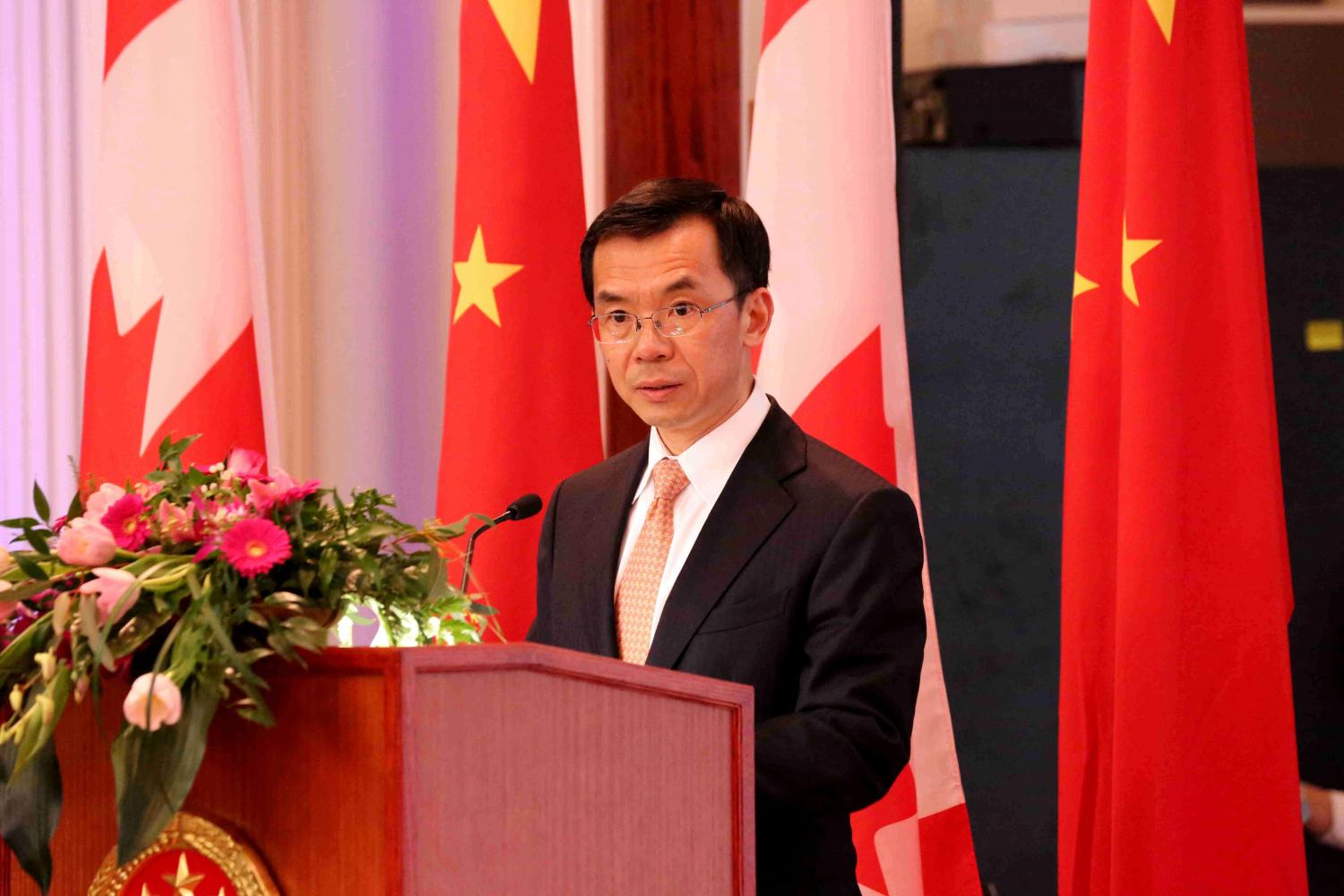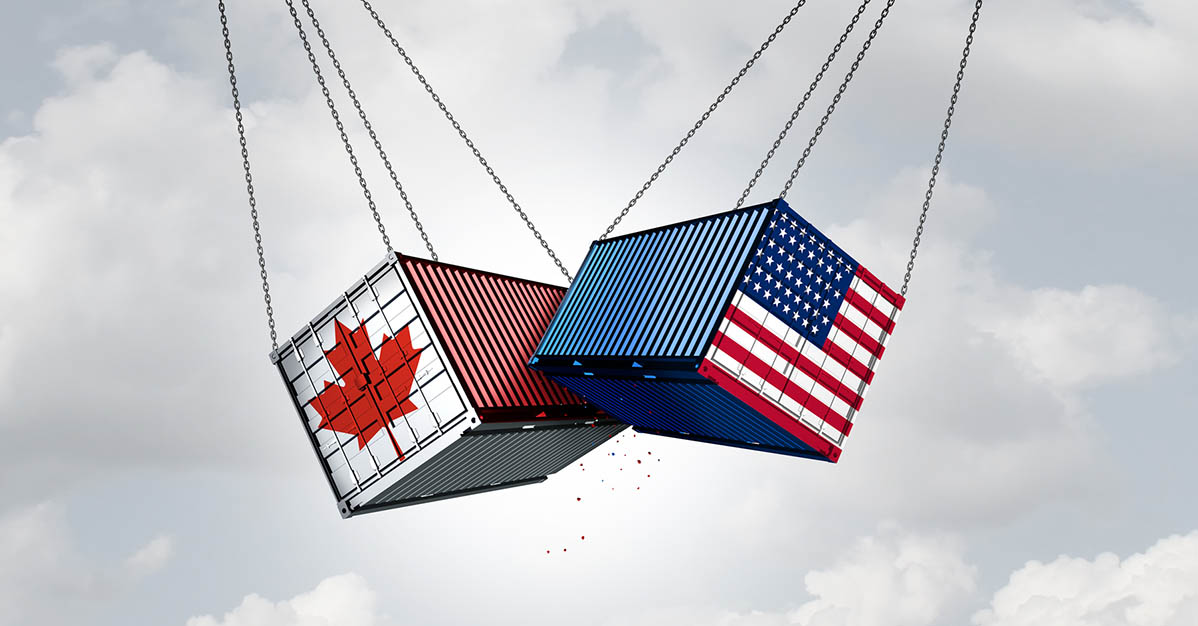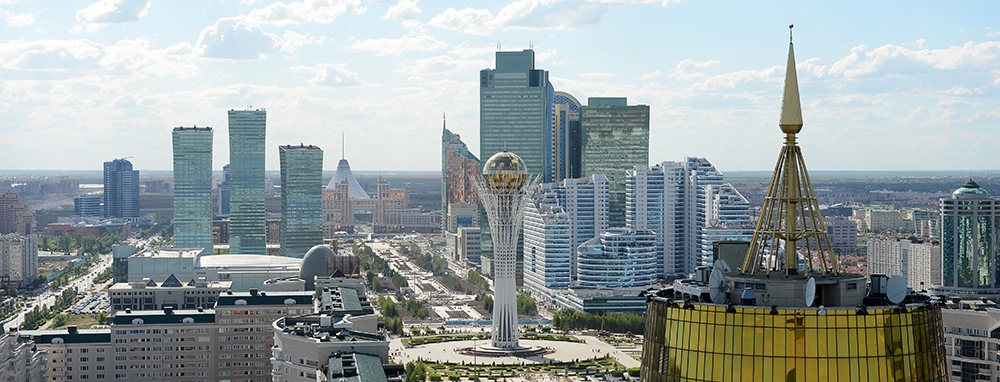
Chinese and Canadian Reporters Interview Chinese Ambassador to Canada Lu Shaye
On April 10, Ambassador Lu Shaye accepted an interview from the Chinese and Canadian media at the Chinese Embassy. Journalists from Xinhua News Agency, People’s Daily, Canadian Press, The Globe and Mail, National Post, Ottawa Life Magazine, The HuffPost Canada, Sept Days attended the interview. The transcript of the interview is as follows:
Ambassador Lu: First of all, welcome to the Chinese Embassy. Today I am very glad to have this opportunity to meet with you here. I have been working in Canada for more than one year and have had a lot of contacts with the Canadian media. I even hope to have regular contacts with you so as to strengthen communication, introduce China's development and China-Canada relations, and provide you with new and different information about China.
Of course, today we have a relatively important background, which is the China-US trade disputes that everyone is currently concerned about. Last week, I accepted interviews from two Canadian TV stations on this issue. Yesterday, The Globe and Mail also published my signed article. Autually, I have stated very clearly about China's position. If you still want to know more about this issue, please feel free to ask me. And I would also like to talk about other issues that you are interested in.
Before taking your questions, I would like to briefly introduce the Boao Forum for Asia Annual Conference 2018, which opened at 9:30 p.m. Ottawa time last night. President Xi Jinping delivered an important speech at the opening ceremony. My colleagues have printed an English version of the speech for you, so I need not go into details. Yet I would like to emphasize that President Xi Jinping has proposed important measures in four fields in his speech on China’s further opening-up: First, significantly broaden market access; Second, create a more attractive investment environment; Third, strengthen the protection of intellectual property rights; Fourth, take the initiative to expand imports. I have noticed that some American media begun to claim that the measures put forward by President Xi Jinping were a response or even concession to the pressure of Trump administration on China. In fact, they have nothing to do with the recent China-US trade disputes, because these measures mentioned by President Xi in his speech were already listed in the report to the 19th CPC National Congress in October last year. The Central Economic Work Conference held at the end of last year and the Report on the Work of the Government delivered by Premier Li Keqiang this March also specifically addressed the measures for opening-up in these areas. The reason China proposed these measures for opening-up is to meet its own development needs and also to promote the development of economic globalization and benefit the people of the world. They are by no means exclusively designed for a certain country, nor are they a submission to trade protectionism and unilateralism. China has stressed before that we hope to resolve China-US trade disputes through dialogues and negotiations. However, under the current pressure from the US, it would be impossible to hold negotiations between the two sides. This, in turn, demonstrates that the measures of trade protectionism and unilateralism taken by the US against China are actually attacks on free trade and open economy. The actions taken by China to promote globalization and safeguard free trade and multilateral trade order are in stark contrast to the unilateralism and protectionist acts of the US that prioritize its own interests.
Now I would like to answer your questions.
The Globe and Mail: Our former Ambassador to China Guy St-Jacques says that the Canadian government should move quickly and try to get a free trade agreement with China. Ambassador, can you tell us where are we in the state of the negotiations? What’s going on with those negotiations?
Ambassador Lu: I have also read the article about your interview with Ambassador Guy St-Jacques. He did raise a point on the subject, that is, consensus has been reached on a broad range of issues on the free trade agreement between China and Canada, but differences still remain on such issues as progressive trade. China has made it clear long ago that no matter what name or concept is used, issues irrelevant to trade should not be included in the free trade negotiations. That is our basic position. Of course, the two sides may have different judgment on what is relevant to trade or not. We believe that if there are disagreements on the basic judgment of a certain issue, it’s better to put it aside, so as to prevent it from disturbing the bilateral free trade negotiations. For example, there is a labor standard issue in the concept of progressive trade. Recently, I have paid a lot of attention to the renewed negotiation among Canada, the United States and Mexico on the North American Free Trade Agreement (NAFTA). I noticed that the renegotiation also involves the labor standard issue. The wage for a worker at a Mexican car assembly plant is 3 US dollars per hour, while the hourly wage for an American worker is 15 US dollars. The United States asked Mexico to raise the wage standard to 15 US dollars per hour. It is impossible for Mexico to accept that. Because if Mexico agrees to meet such a requirement, its car factories will be closed and the workers will lose their jobs. So from your point of view, whether accepting the US labor standard is good for the Mexican workers or just do harm to them? Therefore, when we discuss the FTA, we should take into consideration the different conditions of each country. This is China's consistent position. We are ready and willing to start the FTA negotiations with the Canadian side at any time. Moreover, we believe that if China and Canada launch the FTA negotiations in the current situation, they will send a positive signal to the world that both countries are holding high the banner of safeguarding free trade and economic globalization.
The Canadian Press: What was the reaction of your government and your leaders when Prime Minister Trudeau went to China in December and continue to press for this progressive trade elements? Can you talk about that a little bit?
Ambassador Lu: In diplomatic negotiations, it is normal that all parties put forward their own opinions and standpoints since different countries have different opinions on certain issues. It is our purpose to reach a consensus through interaction and communication. Certainly, even if the consensus cannot be reached in a short time, it is by no means a big problem. With regards to the progressive trade concept proposed by Canada, we have no objection if Canada applys it to its own national affairs or other international affairs. What we do not agree is that this concept is applied in the negotiations of the China-Canada FTA. However, we do not think that differences in this aspect will affect the overall relations between our two countries. We can continue discussing on this.
The Globe and Mail: I have a question regarding the extradition discussions. Can you please update us on the status or progress in discussing an extradition treaty between Canada and China?
Ambassador Lu: Actually China and Canada have never negotiated an extradition treaty. I still remember last year when I just arrived in Canada, the Canadian media were discussing that China and Canada might start negotiating an extradition treaty. However, as far as I know, the two sides have not entered the substantive negotiation process. In fact, people are talking about something that doesn’t exist.
The Globe and Mail: May I ask a follow-up question? So in a free trade treaty, does China expect we wouldn’t set rules so that they would be allowed to bring Chinese labors or workers to Canada to work on projects?
Ambassador Lu: Since the negotiation of the FTA has not begun, it’s too early to talk about such kinds of issues. Based on my personal diplomatic experience, I do not think China will have such an idea. There is no need for China to impose its own ideas on Canada, and everything must proceed on the basis of mutual consent. So for the same reason, on the issue of labor standards, Canada should not impose its own ideas on China either.
The Canadian Press: What have you done to persuade the Trudeau government to approve the Aecon takeover? And how would rejecting the Aecon deal by Canada affect the bilateral relations?
Ambassador Lu: To be honest, at first I felt the Canadian media have overreacted to the Aecon takeover case. After all, it is simply a construction company, and the Chinese company’s acquisition is totally out of the consideration of commercial interests. Now since this case has entered the procedure of Canadian national security review, let’s wait for the result. The concern of the Chinese Embassy mainly lies in that the Canadian government’s policies relating to the national security should not be discriminatory, and the national security reviews should not be taken only on acquisition cases by Chinese companies. It is Canada’s internal affair to conduct the security review in accordance with its legal provisions on foreign companies’ acquisition of Canada’s companies, and we will not say a word on this. But there should be no discrimination and all foreign companies should be treated equally.
The Globe and Mail: Ambassador, you said in the beginning that there has been consensus reached on a number of areas in the informal talks on free trade between Canada and China. Can you broadly speaking what are the areas where there were broad consensus?
Ambassador Lu: China and Canada have conducted four rounds of exploratory discussions on the FTA, and the purpose is to reach some consensus on mutually beneficial measures in the areas of trade and investment which are usually involved in a free trade agreement. The broad areas I am talking about refer to the terms of any free trade agreement in general sense. In fact, there is no disagreement between China and Canada. Of course, the negotiation has not yet begun, and relevant details will not be disclosed until the negation is over.
The Canadian Press: On the progressive trade elements, you singled the labor. There are other elements to that, like the environment. Does China have a view on the environment part of the progressive trade agenda that Canada is pushing? Or there’s just the labor that is a problem?
Ambassador Lu: As for what China thinks should be discussed and what should not, we have exchanged views with the Canada side during our interaction. I believe you are all clear about China’s standpoint on the environmental issue. We support international actions in response to the climate change, and we support the Paris Agreement. Meanwhile, China has made great efforts in promoting the environmental protection and the development of clean economy. China and Canada have also conducted very good cooperation in the international arena.
Ottawa Life Magazine: I just want to follow up a comment you made earlier regarding the United States taking an aggressive stance against China. China imposes 25% tariff on American cars going into China. And there’s 2.5% the other way. In Canada, the auto sector here is intrinsically linked with the U.S. We make a lot of steel and we sell a lot of steel to the auto sector. So there will be a ripple effect. I am wondering if you can give us an indication why you see that as aggressive? There’s huge gap in terms of goods and services between China and the United States, and we have quite a large gap with China ourselves. So how do you define a level playing field?
Ambassador Lu: The reason China levies 25% tariffs on imported cars is that it’s one of the agreements reached between China and other parties through negotiations when China joined the WTO. Therefore, implementing this tariff is actually what China did to fulfill its commitment to the WTO. Although the United States imposes only 2.5% tariffs on cars imported from foreign countries, it cannot be concluded that the two countries are not equal in this regard, for the car industry in the United States is much more advanced than other countries, especially than China. The United States exports more than 300,000 cars to China each year, while China only exports 25,000 cars to the United States a year. Besides, although the United States levies only 2.5% tariffs on imported sedans, it levies at least 10% to 25% tariffs on imported trucks. So you can see the United States hasn’t told the full story. Moreover, although the United States has a large number of deficits in the trade with China, a detailed analysis will reveal that the United States has not suffered losses because about 40% exported products from China to the United States are produced by US companies in China, such as the cars of General Motors and Apple’s iphones. General Motors has joint ventures in China and it sells 4 million cars each year in China, accounting for 40% of its global sales; and Apple only conducts its iphones’ final assembly in China. I have seen some data showing that if an iphone exported to the United States is worth $200 US dollars, only 2% of the profits will be left in China, 58% will be taken by Apple, and the remaining 40% will be the profits for the intermediate products provided by trading partners such as the United States, Japan, the Republic of Korea and China’s Taiwan. So it can be said that in the bilateral trade between China and the United States, the trade surplus remains in China, but the trade interests have flown to the United States. What's more, the trade deficit of the US with China consists of many factors. Firstly, the domestic savings of the United States are lower than its investment, so only by relying on the trade deficit can it maintain the domestic consumption. Secondly, support for the status of dollar as an international settlement currency needs a huge trade deficit. Thirdly, the United States sets export restrictions to ban the high-tech products from being exported to China. As a result, What China wants to import is prohibited by the U.S. government to export. The research findings by some US think-tank show that if the United States alleviates its exports restrictions on high-tech products to China to the level for Brazil, the US trade deficit with China will decrease by 24%, and if the United States alleviates these trade restrictions on China to the level for France, the US trade deficit with China can decrease by 34%. Therefore, we must clarify a concept that in the trade between China and the United States, it is not the United States who suffer the losses. In fact, although we will not say that China surrenders profits to the United States, at least the bilateral trade is a mutually beneficial and win-win result. Moreover, the United States has not yet calculated the huge surplus of its service trade with China, which is about $37 billion US dollars.
The Globe and Mail: Can I ask you a two-part question here? One is you said China-Canada free trade agreement would raise a flag against the protectionism around the world. Did you also mean that this would be a way to counter Donald Trump’s America First policy? And secondly the Trudeau government has said that Aecon would not be able to bid on Gordie Howe Bridge if the China Communications Construction Company takes over the company. I’d like to know your opinion on that.
Ambassador Lu: It is a question for the American people regarding how the United States thinks of China-Canada FTA. The core of a free trade agreement is to reduce trade barriers and improve the level of trade facilitation, to which the China-Canada FTA will also conform. As such, under the current circumstance where the prospects of globalization draw great concerns of the international community, the start of the negotiation on a FTA China-Canada will sent out positive signals to the international community. As for the bridge project that involves the Aecon Company, I would rather not make any comment since no conclusion has been reached to the acquisition.
National Post: If the Aecon acquisition is rejected, how that will influence your overall view of Canada as an investment destination?
Ambassador Lu: It depends on whether the rejection makes sense. As I just mentioned, we do not hold any objection to the national security review which the Canadian government carrys out on the acquisition by foreign companies in accordance with law. Nevertheless, we hope that on the cases of acquisition by Chinese companies, the Canadian government could treat them equally without discrimination.
The Globe and Mail: Can I ask a follow up question? Mr. Ambassador, the Canadian government has not adopted any position on the Belt and Road Initiative. It has not endorsed the Initiative, and it has been silent on that matter. Is China looking for countries like Canada to officially back the Belt and Road Initiative? And how to succeed in convincing Canada and other western countries to do so?
Ambassador Lu: China welcomes Canada to engage in the Belt and Road construction. It is beyond reproach that Canada takes stance and actions based on its own interests, to which we show due respects. The main reason that China proposes the Belt and Road Initiative is to provide countries around the world with an opportunity to cooperate with each other for mutual benefits and win-win results under the circumstance of economic globalization. Indeed, the Belt and Road Initiative was put forward by China, but the opportunities and outcomes that it brings are shared by the whole world. From the very beginning, China has stated clearly that the construction of the Belt and Road upholds the principle of extensive consultation, joint contribution and shared benefits. China has no geopolitical calculations, seeks no exclusionary blocs and imposes no business deals on others. We welcome the participation of Canada to the construction of the Belt and Road.
The Globe and Mail: When China joined the WTO, Canada, US and other western countries made a commitment to recognize China as a market economy under the WTO. I could be wrong, but I don’t think Canada has recognized China as a market economy under the WTO. What does China do to convince Canada to recognize it as a market economy under the WTO?
Ambassador Lu: First, I need to clarify to you that there is no such concept as “market economy status” in the WTO provisions. At least it does not exist in the agreement that China signed with the WTO. According to the 15th article of the Protocol on the Accession of China to the WTO, other countries must stop the “surrogate country approach” when adopting the anti-dumping policy against China after December 11, 2016. In other words, after December 11, 2016, if WTO members take anti-dumping measures against China, they cannot adopt the “surrogate country approach”. The “surrogate country approach” and the so-called “market economy status” are two entirely different things and cannot be confused with one another. Currently, The US and some European countries refuse to fulfill their commitments to China, which is to abandon the practice of “surrogate country approach” by the end of 2016. That is the key to answering your question. For the purpose of concealing their refusal to fulfill the obligations required by the international protocol, these countries came up with the concept of “market economy status” to confuse the public, who are not professional in economy and trading issues. Since its accession to the WTO, China has fully implemented all commitments it made. On the 10th anniversary of China's entry to the WTO, former Director-General of the WTO Pascal Lamy commented on China's implementation of its commitments to the WTO and said that China’s performance level is A+.
The Canadian Press: Before Trudeau’s visit to China last December there was a sense of warming relations between the two countries. But since then the relations have cooled somewhat. And I am wondering what are the biggest challenges in the relationship right now. And a second question, I am wondering if China has a deadline to start the free trade talks with Canada?
Ambassador Lu: In fact, the China-Canada relations remain close and warm as the two countries maintain communications at both high-level and other levels. The reason you feel the relationship seems cooler is perhaps now Canada is confronted with other more prominent issues in its foreign affairs, such as the NAFTA, which makes the China-Canada relations seem less prominent for the moment. In my eyes the whole Canadian society is focusing on the NAFTA. As for the China-Canada FTA, we have not set a deadline. To be honest, there’s no point to set a deadline because it should be a consensual issue and it is a matter of negotiation after all. China will not impose its will on Canada. Of course, we hope the two countries can sign the agreement at an early date, as it is beneficial to both sides.
Sept Days: Chinese companies often make relatively little profit in the trade between China and the US, which is usually around 10%, and some Chinese companies only have 1-2% profit. In this situation, Why does China still strongly advocate free trade with the United States and promote worldwide free trade, since China has a huge market and advanced production capacity?
Ambassador Lu: It is because the world has become a community with a shared future in which all parties are interdependent on and interwoven with each other. As different goods are manufactured in different countries, only through exchanges of needed products can we truly promote the overall development of global economy and help under-developed countries to catch up with developed countries. It is also the core essence of the community with a shared future for mankind proposed by President Xi Jinping, that is, win-win cooperation. Although China boasts a tremendous market with a population of nearly 14 billion, China is willing to share our market and opportunities for development with countries around the world. As President Xi Jinping said, all countries are welcome to board the express train of China’s development. The Chinese people have learned the truth that openness leads to progress while closeness ends up in backwardness. In this regard, China’s door of opening up will not be closed, but will open wider regardless of the final development of trade disputes between China and the US.
The HuffPost Canada: In your open remarks, you said that you want to portray a different China. So I am wondering what is that different view of China that you want to portray in Canada?
Ambassador Lu: By saying a different view, I mean that I hope to bring the true image of China that is not the same with the one shown by the Canadian media to the Canadian public. After I came to work here in Canada, I found that the image of China presented by some Canadian media is distorted to some extent and not reflecting the real modern China, which aggravates misunderstanding of the Canadian public towards China. Such thing is not conducive to the development of the China-Canada relationship. Therefore, hopefully through my introduction, the Canadian media and people can get to know the real China. Whether they accept it or not, at least they are offered with a comparison before making any judgment. All I can do is to provide an option.
The HuffPost Canada: What are the examples of those misunderstandings?
Ambassador Lu: For instance, some Canadian media mistake China as an autocratic country with no democracy or human rights. And some regard China’ state-owned enterprises as dreadful monsters that would impose threats on Canada’s national security. All these misunderstandings should be corrected and clarified to the Canadian media and public.







